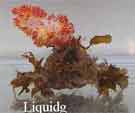Diatom algae info, no these phytoplankonic life forms are protists.
South East Queensland Marine Aquarium and Ocean activities Forum :: SEQMAOAF :: Advice on all marine aquarium issues
Page 1 of 1
 Diatom algae info, no these phytoplankonic life forms are protists.
Diatom algae info, no these phytoplankonic life forms are protists.
What are diatoms?
Okay first up diatoms are not actually algae and exist on nutrients/nitrates as food and silicates to make their external casing which is the brown "algae" actually silicon, in your waters during the first part of their growth cycle.
Diatoms are protists but are photosynthetic as many other protists species are and some are symbiotic with aquarium cycling/oxidising bacteria as well! Okay most of us know that during part of some diatom species, the youngsters settle to the floor or where ever in our tanks where there in a good flow to complete that part of their growth cycle and make a crude silicon “out of available silica” husk like a ultra tiny cocoon you might say as a huge community of brown to golden brown! There are thousands of diatoms going through this part of their life cycle in this browning and its over and over again, building on that browning, that appears like algae which it is not, it is what is left over once they appear and hatch sort of and become temporarily planktonic, unlike some other species that are permanently planktonic! Protists are near on the most diverse life form above microbes in all the planets waters. With out protists in some form or another, all our reef aquarium life, and we, could not exist! Cool life forms protists and can be nasty as are the ich and the velvet protists.
Most purchased salts are chokers with silicates and the same with most material bought for substrates. If you get rid of the silicates, diatoms can not exist!GFH/O and phos sponge will reduce silicates if need be.
Some examples of diatom blooms.
Diatom bloom on substrate.

Diatom bloom on base rock.

Diatom bloom that has been there for some time with no herbivores present.

A diatom mainly consists of what we would usually make silicon and glass from.
Its outer cell wall is hydrated silica, which equates to silicon dioxide with in a pectic layer consisting of a few types of monosaccharides, which can be associated with lipid and or proteins.
Diatoms are found in all water types though they are best to study and find in seawater.
They are more so active as blooms when the ocean warms and then as it cools, not so much in the hotter temperatures!
In temperate waters nutrients accumulate during the winter. This results in a spring bloom of phytoplankton.
In the ocean these creatures are grazed down by zooplankton, but in the aquarium, this doesn’t happen.
Sufficient light is available then and temperatures are higher. The most important factor however is the availability of nutrients. The spring outburst of phytoplankton is grazed down by zooplankton in the summer and occurs again as a second maximum in the autumn.
There are two forms of diatoms, centricae the round ones and Pennatae are elongated ones and of each type there are hundreds, possibly thousands.
Reproduction for centricae is sexual via division and is achieved with auxospore formation and with diatoms is called sexual reproduction.
Through out the diatom range there is A sexual and sexual reproduction in abundance with al the varied forms.
There are two types; firstly planktonic diatoms and they have lightly built silica cell walls filled with cell sap with the same density as the sea water, different from the other more heavier type of sessile marine species that we as reefers see in blooms on substrates and live rock.
The planktonic types need to stay in the illuminated layer of the sea to enable photosynthesis as do all diatoms with in reason.
It is thought that potentially diatoms that convert carbon dioxide and water into sugars, as a bi product of photosynthesis they carry out twenty five percent of the earth’s carbon fixing, this is because they contain chlorophyll.
While moving as plankton, with the oceans currents, these creatures are also a major food source for all marine life at their larvae stages, and or filter feeders and produce the majority of earth’s available oxygen.
Diatoms cause issues for reefers by making frustules that are the browning on a substrate or on live rock that consists of many silicified cell walls of near pure silica consisting of silicic acid and organic substances that are the make up the two valves or overlapping halves.
Diatom frustules are characteristically highly ornamented when observed close up, forming an amazing range of forms. The shape of the diatom frustule is species specific.
They vary in size from 2 microns to about 500 microns on average.
When planktonic diatoms are viewed with a light microscope when life is in the frustules they appear clear and we are literally looking through glass.
In a short space of time these appear golden brown almost like dust over live rock or the substrate and this is what reefers see in their aquarium.
For diatoms to be abundant you need silica and phosphates with possibly weak or unsuitable lighting.
To reduce them you can use other species of caulerpa algae and possibly cyano bacteria externally to consume the foods they need to survive and multiply or phosphate reduction material like GFH/O- rowa phos is just one brand of these and or use phosphate sponge.
This will starve out this planktonic protist that is incredibly valuable to earth over all ,called diatoms.
Okay first up diatoms are not actually algae and exist on nutrients/nitrates as food and silicates to make their external casing which is the brown "algae" actually silicon, in your waters during the first part of their growth cycle.
Diatoms are protists but are photosynthetic as many other protists species are and some are symbiotic with aquarium cycling/oxidising bacteria as well! Okay most of us know that during part of some diatom species, the youngsters settle to the floor or where ever in our tanks where there in a good flow to complete that part of their growth cycle and make a crude silicon “out of available silica” husk like a ultra tiny cocoon you might say as a huge community of brown to golden brown! There are thousands of diatoms going through this part of their life cycle in this browning and its over and over again, building on that browning, that appears like algae which it is not, it is what is left over once they appear and hatch sort of and become temporarily planktonic, unlike some other species that are permanently planktonic! Protists are near on the most diverse life form above microbes in all the planets waters. With out protists in some form or another, all our reef aquarium life, and we, could not exist! Cool life forms protists and can be nasty as are the ich and the velvet protists.
Most purchased salts are chokers with silicates and the same with most material bought for substrates. If you get rid of the silicates, diatoms can not exist!GFH/O and phos sponge will reduce silicates if need be.
Some examples of diatom blooms.
Diatom bloom on substrate.

Diatom bloom on base rock.

Diatom bloom that has been there for some time with no herbivores present.

A diatom mainly consists of what we would usually make silicon and glass from.
Its outer cell wall is hydrated silica, which equates to silicon dioxide with in a pectic layer consisting of a few types of monosaccharides, which can be associated with lipid and or proteins.
Diatoms are found in all water types though they are best to study and find in seawater.
They are more so active as blooms when the ocean warms and then as it cools, not so much in the hotter temperatures!
In temperate waters nutrients accumulate during the winter. This results in a spring bloom of phytoplankton.
In the ocean these creatures are grazed down by zooplankton, but in the aquarium, this doesn’t happen.
Sufficient light is available then and temperatures are higher. The most important factor however is the availability of nutrients. The spring outburst of phytoplankton is grazed down by zooplankton in the summer and occurs again as a second maximum in the autumn.
There are two forms of diatoms, centricae the round ones and Pennatae are elongated ones and of each type there are hundreds, possibly thousands.
Reproduction for centricae is sexual via division and is achieved with auxospore formation and with diatoms is called sexual reproduction.
Through out the diatom range there is A sexual and sexual reproduction in abundance with al the varied forms.
There are two types; firstly planktonic diatoms and they have lightly built silica cell walls filled with cell sap with the same density as the sea water, different from the other more heavier type of sessile marine species that we as reefers see in blooms on substrates and live rock.
The planktonic types need to stay in the illuminated layer of the sea to enable photosynthesis as do all diatoms with in reason.
It is thought that potentially diatoms that convert carbon dioxide and water into sugars, as a bi product of photosynthesis they carry out twenty five percent of the earth’s carbon fixing, this is because they contain chlorophyll.
While moving as plankton, with the oceans currents, these creatures are also a major food source for all marine life at their larvae stages, and or filter feeders and produce the majority of earth’s available oxygen.
Diatoms cause issues for reefers by making frustules that are the browning on a substrate or on live rock that consists of many silicified cell walls of near pure silica consisting of silicic acid and organic substances that are the make up the two valves or overlapping halves.
Diatom frustules are characteristically highly ornamented when observed close up, forming an amazing range of forms. The shape of the diatom frustule is species specific.
They vary in size from 2 microns to about 500 microns on average.
When planktonic diatoms are viewed with a light microscope when life is in the frustules they appear clear and we are literally looking through glass.
In a short space of time these appear golden brown almost like dust over live rock or the substrate and this is what reefers see in their aquarium.
For diatoms to be abundant you need silica and phosphates with possibly weak or unsuitable lighting.
To reduce them you can use other species of caulerpa algae and possibly cyano bacteria externally to consume the foods they need to survive and multiply or phosphate reduction material like GFH/O- rowa phos is just one brand of these and or use phosphate sponge.
This will starve out this planktonic protist that is incredibly valuable to earth over all ,called diatoms.
_________________
Forum Admin

liquidg- Posts : 2782
Join date : 2010-02-02
Location : Brisbane bayside
 Similar topics
Similar topics» Why do your marine aquarium life forms die!
» Something on protists.
» Algae for nutrient-importing for coral health,plus some cyano and more algae information.
» Halymenia algae, a local red algae.
» algae
» Something on protists.
» Algae for nutrient-importing for coral health,plus some cyano and more algae information.
» Halymenia algae, a local red algae.
» algae
South East Queensland Marine Aquarium and Ocean activities Forum :: SEQMAOAF :: Advice on all marine aquarium issues
Page 1 of 1
Permissions in this forum:
You cannot reply to topics in this forum
 Home
Home